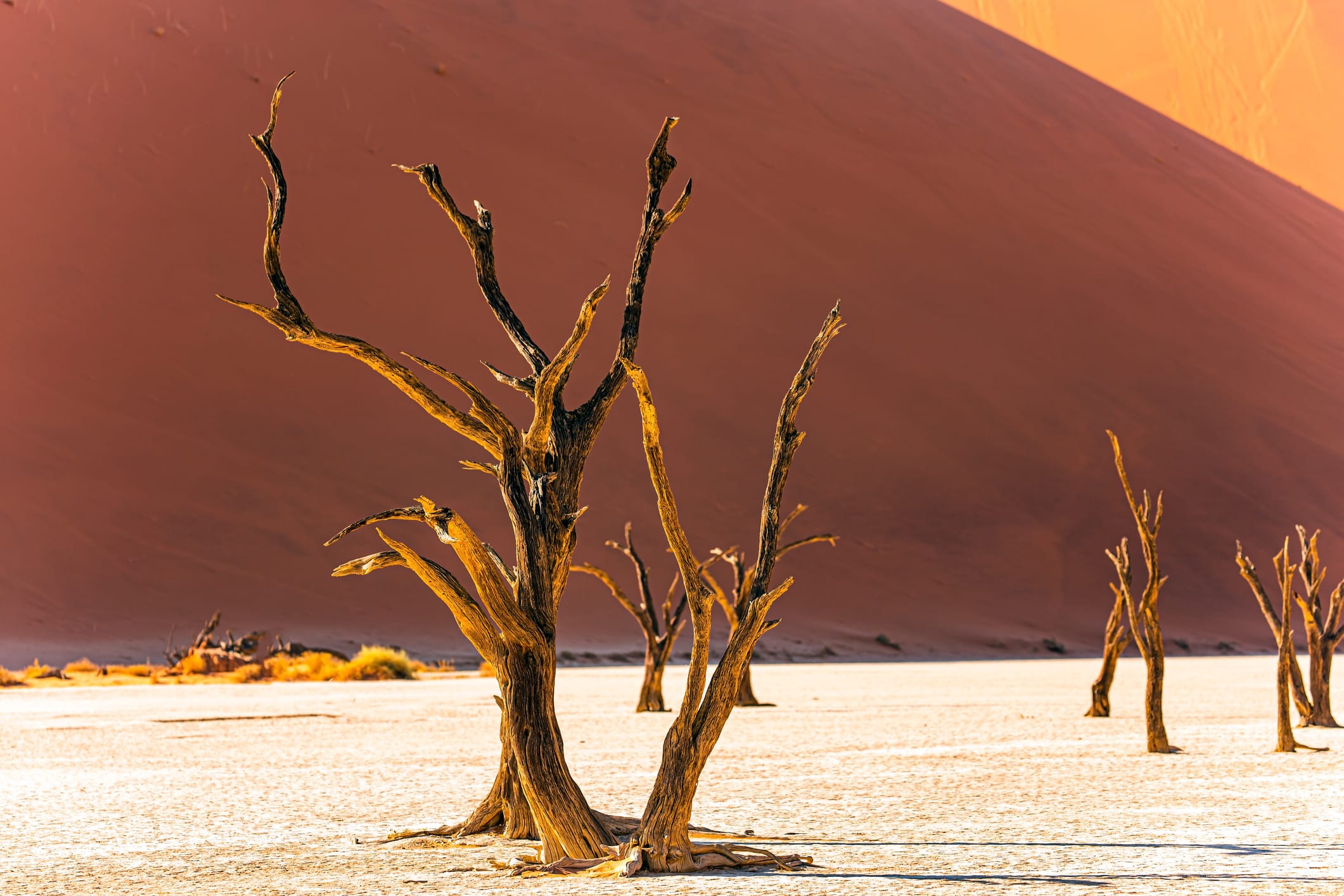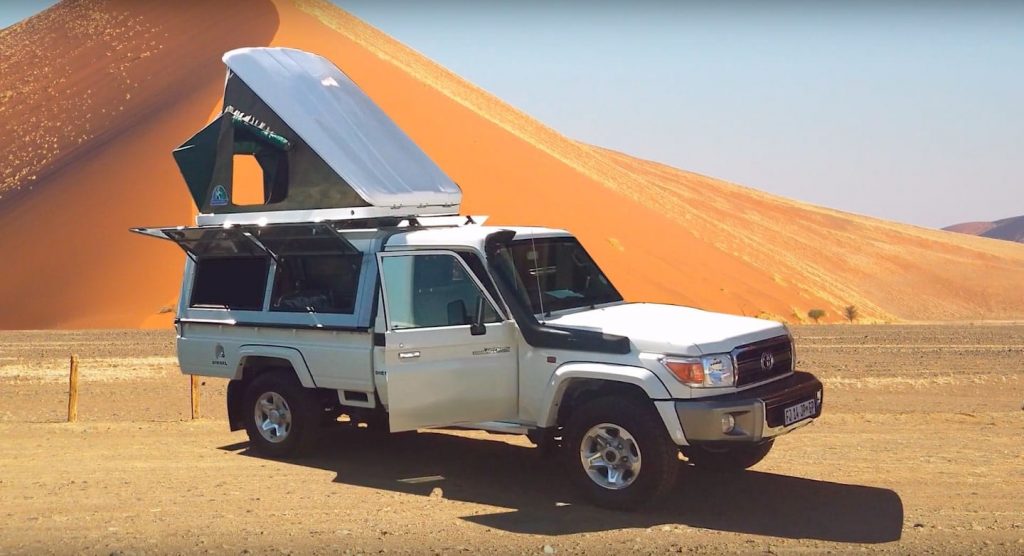
The Namib-Naukluft Park Trail: The Ultimate Desert 4x4 Route in Namibia
The Namib-Naukluft 4×4 trail, situated in the expansive Namib-Naukluft Park, is a breathtaking experience for anyone keen on off-road adventures and challenges. It can rightly be called the gem of the 4×4 trail routes in Namibia.
How difficult is the Namib-Naukluft 4×4 Route in Namibia?
This trail is reputed to be one of the most challenging unguided 4×4 routes on the planet! You have to be a technically skilled driver to attempt it. Developed by early pioneers and farmers, the trail will tax your off-roading expertise to the utmost.
The trail is not designed necessarily to test your vehicle, but rather your driving skills! Certain vehicles are restricted because the track is so narrow and rocky. However, the trail can be successfully negotiated by most good 4 x 4 vehicles with a standard track width.
The trail includes extremely steep gradients, sharp rocks, as well as thick sand. However, it’s not recommended that you fit your vehicle with sand, mud or wide, soft-walled tyres because of the many sharp stones and rocks on the trail.
You’ll definitely need to use your vehicle’s lowest gear to negotiate the steeper sections. Visitors are requested to avoid wheel spinning as it adds to the erosion of the track. Visitors are also asked to drive slowly and not venture off the trail.
How long is the Namib Naukluft Park Trail?
The trail is about 46 miles or 73 kilometres long, and it will take you all the way from the Swakop River in the north to Lüderitz in the southwest. The trail leads you through the breathtaking and dramatic landscapes of the Namib-Naukluft Park. It wends its way through some extremely mountainous terrain, and is generally very narrow and rocky.
But it’s one of the most picturesque and unique 4×4 routes you can undertake in Namibia, as it carves its way through the largest nature conservation area in Africa. The Namib-Naukluft Park covers an overall area of some 19,000 square miles (or close on 50,000 km2), which makes it the largest park in Africa, and the fourth largest conservation area in the world.
Duration of the Trip
This is a two-day trail with an overnight stop at the Tjeriktik camp, and, as we’ll explain later, departure and return times apply. A maximum of four vehicles and 16 people can be accommodated at the camp at the same time.
The facilities at Tjeriktik include potable water, a shower, toilets, outdoor fireplace, table and benches. Four stone-built shelters with built-in bunks are provided, and these huts can accommodate four people each. Visitors can use their own tents if they prefer. Note that visitors must provide their own camping equipment, firewood, food, mattresses, and drinks.
Attractions and Points of Interest Along the Trail
There are numerous points of interest along the trail; here are just a few of them:
- Blake’s Pass named after Robbie Blake, owner of the farm Naukluft and builder of the road up to the plateau
- Fig Fountain that is utilised by many animals
- The steep so-called ‘Zebra Zigzag’ where you should watch out for and remove rocks dislodged by zebras before you drive up.
- Panorama View that offers a superb view
- De la Bat’s Rocks
- A dry well dug by hand
- A drill that was laboriously (and dangerously!) transported up to the plateau in 1948
- Tjeriktik Camp via Rockhopper Gorge
- Bakenkop with its beautiful view of the Tsondab River Valley
- Several scenic pans teeming with fish, fresh-water shrimps and waterfowl
What else will I see along the trail?
The trail passes through the Naukluft Mountains, which are home to unique flora and fauna. The trail will guide you through some of the most incredible landscapes in the world.
The Naukluft 4×4 trail is the first of its kind in a conservation area in Namibia. It offers you a great opportunity for a closer look at nature and the magnificent Naukluft Mountains. You may well encounter some of Namibia’s diverse wildlife, including oryx, springbok, and zebra. In fact, you are very likely to see herds of the boldly patterned Hartmann’s mountain zebras, a subspecies that occurs in Namibia and south-western Angola.
Other animals you may see include:
-
Klipspringers that thrive in this rocky habitat
-
Kudu
-
Springbok
-
Gemsbok (oryx)
-
Dassies (rock hyrax)
-
Leopards (though rarely seen)
-
Caracals
-
African wild cats
-
Genets
-
Black-backed jackal
-
Baboons
-
Occasional spotted hyenas
The area’s impressive list of birds includes:
- White-tailed shrikes
- Chats
- Korhaan
- Hornbills
- Karoo robins
- Rosy-faced lovebirds
- Palewinged starlings
- Chanting goshawks
- Red-eyed (or black-fronted) bulbuls
- Cinnamon-breasted warblers
The high cliffs offer excellent breeding spots for black eagles, and augur and jackal buzzards are also often spotted.
Important Information About the Trail
-
To drive the trail you need a reliable 4×4 vehicle and you have to be an experienced off-road driver. Your vehicle must be in excellent condition.
-
It’s never recommended that you travel on your own. It’s far better to travel in a group with at least two vehicles in case of any mishaps.
-
You also need to take along adequate spare parts, recovery gear, and spare wheels.
-
Note that the Naukluft 4×4 trail is an unguided overnight trail and no guides or guide vehicles are available.
-
It’s mandatory that you make a reservation at the reservation office in Windhoek at least eight weeks before you intend driving the trail.
-
It’s vital that you note that all 4×4 drivers who do the trail have to book in at the Naukluft office by mid-day on the day they’re driving the trail. They’ll be briefed on safety measures, emergency procedures and their equipment will be checked.
-
Note that this is an exclusive trail, so only one group of drivers will be allowed onto the trail at a time. As a result, drivers are required to be back at the Naukluft office by noon the following day.
-
It’s very important that you adhere to this as the following group driving the trail won’t be allowed to set off before your group is safely back.
-
The trail and its campsite operate on a ‘carry in, carry out’ policy, which means that you must take all your rubbish back out with you!
-
You’re required to stick to the designated trail for safety reasons and to minimise the impact your vehicle has on the environment.
-
Due to the very high summer temperatures that can peak at well over 38°C or 100°F, drivers are advised to carry at least 20 litres of water per vehicle.
Best Vehicles for the Trail
The terrain of the Namib-Naukluft 4×4 Trail is challenging and diverse. There are some almost insanely steep and rocky climbs, so the trail calls for robust, capable and well-maintained 4×4 vehicles.
Vehicles like the Toyota Landcruiser, Ford Ranger, Toyota Double Cab, and Discoverer FunX, are generally up to the challenge due to their sturdy build, excellent ground clearance, and impressive off-roading capabilities.
Drive South Africa offers a wide range of reliable 4×4 rental vehicles that’ll help you safely handle the challenges of the ultimate desert 4×4 route in Namibia, the exhilarating Namib-Naukluft Trail!
Related Posts
8 New Experiences You Should Try in Cape Town
Cape Town is a city full of new experiences, hot spots venues, clubs, restaurants and bars just waiting to be discovered. While new venues and hot spots open and close with surprising regularity, there just something about a new spot that makes for a special experience that you should enjoy even if you do not […]
Read MoreGreen Season: Sustainable New Year Resolutions You Should Put into Practice
This year we enter into an entirely new decade. Whether you love the chance to start fresh or are not too keen on it, New Year’s resolutions are a great way to change your habits, mindsets and goals. Carpooling/lift sharing Not only does carpooling reduce the strain on our planet’s oil resources and greenhouse gas […]
Read MoreWhy is Cape Town known as Africa's Gateway
For many years Cape Town has been known as Africa’s gateway. It is known as the start and end of your African Journey, and the link between places. Alongside Johannesburg, Cape Town is one of the most developed cities on the continent. This means it offers the luxuries of a city including hospital care, hotels, […]
Read More Rating: 4 - 1562 Reviews
Rating: 4 - 1562 Reviews



